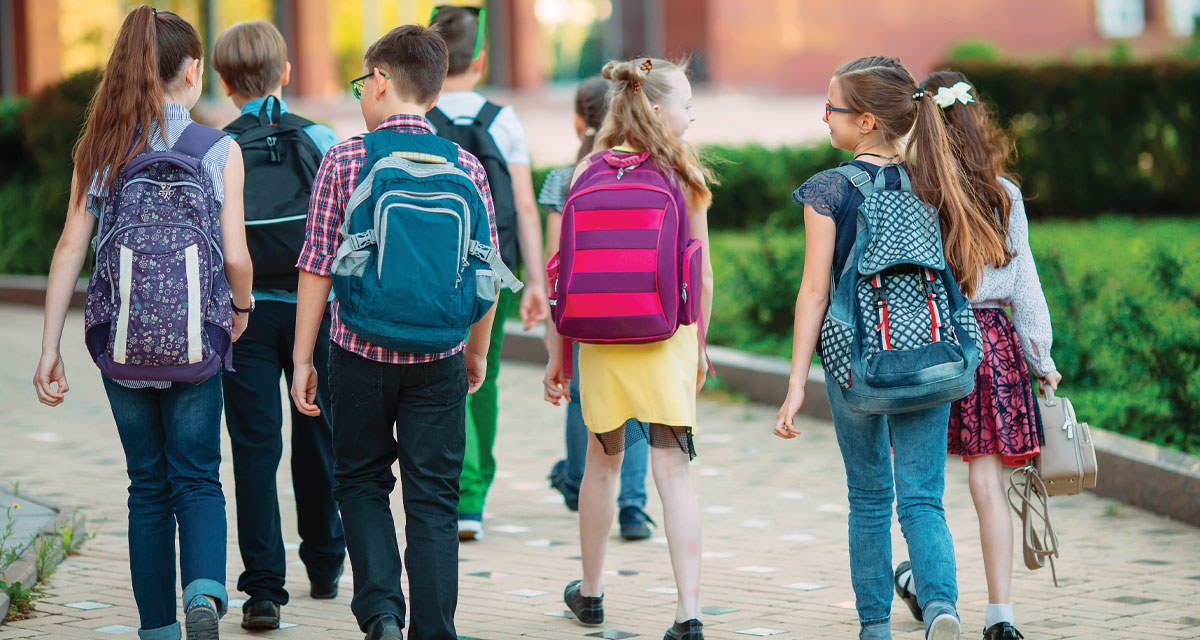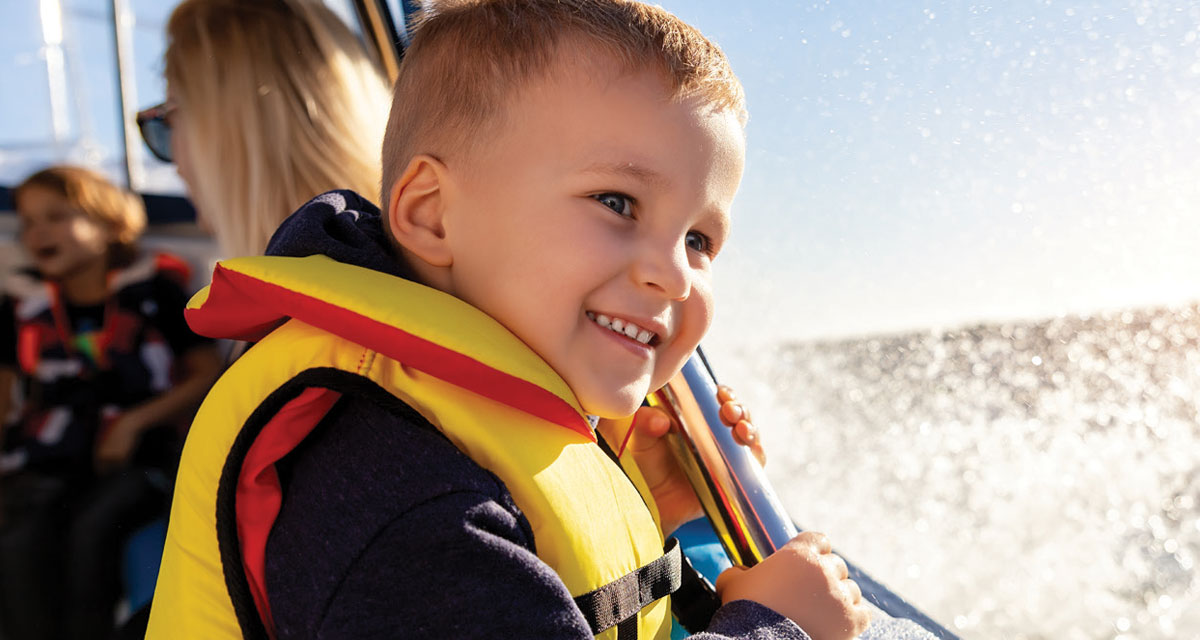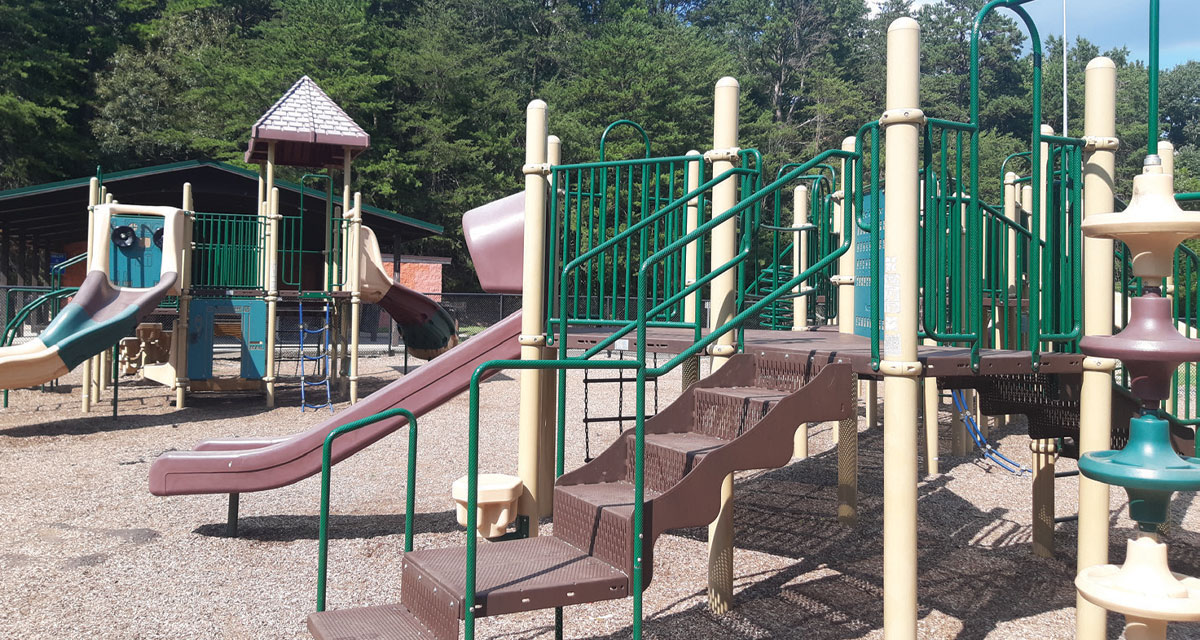Each month, this series will provide important facts and tips surrounding child safety in an effort to support parents and caregivers as they navigate reducing risks and creating the safest environment possible for the children in their lives.
Lunchbox packed? School supplies labeled? It’s back-to-school season, and while you’re checking things off the to-do list, don’t forget to familiarize yourself with helpful ways to keep your kiddos safe this school year.
Whether they are heading to elementary or middle school, ensuring their health, safety and overall well-being is top of your list and ours. This article rounds up 10 back-to-school safety tips that parents, teachers and students can follow to create a safe and secure learning environment all year long.
#1 Establish a Safe Route to School
Before the first day of school starts, identify the safest route for your child to travel to school, considering your own drive as well as when they get out of the vehicle to the drop off and pick up areas. Choose well-lit areas and paths with minimal traffic, reminding your student to look both ways and never be distracted by a cell phone or other screen. Encourage them to walk in groups or with a trusted adult whenever possible. If they take the bus, teach them how to wait safely and board and exit the bus carefully. If you have siblings, encourage older siblings to assist younger ones when possible.
#2 Teach Road Safety
One of the most frequent back-to-school safety incidents reported is due to improper road safety measures. Remind children about the importance of traffic rules, such as using crosswalks, looking both ways before crossing the road and waiting for signals and traffic guards. Reinforce the importance of avoiding dark clothing and wearing reflective accessories or clothing to help drivers have increased visibility especially during the darker mornings or evenings. These safety measures can pertain to walkers, cyclists, carpool and bus riders alike.
#3 Backpack Safety
Students from Kindergarten to 8th grade can begin noticing back and posture issues from wearing a backpack incorrectly. Ensure your child’s backpack is the appropriate size and weight for their age and size to avoid issues. Encourage them to use both shoulder straps to distribute the weight evenly across their body. Teach your child to pack only what is necessary, and periodically, check the contents to avoid carrying too many items adding unnecessary bulk and weight. Consider upgrading backpacks that include safety features such as reflective add ons, anti-theft, charging capabilities and even bulletproof shield inserts in the event of an emergency.
#4 Stranger Danger & Inappropriate Adult Awareness
Most caregivers will have a conversation about strangers at some point during childhood, however, back-to-school is an appropriate time to reintroduce the subject. Remind them of things like trusting their instincts if something feels wrong, what safe and unsafe touch is and not talking to or accepting anything from unfamiliar people on the way to or from school. Teach them to seek help from trusted adults, such as teachers or school staff, in case they encounter a stranger (or someone they know) who makes them uncomfortable.
#5 Cyber Safety
In today’s digital age, it is crucial to educate children about online safety, and a new school year with new computers and internet access is a great time for these reminders. Teach them about the risks associated with sharing personal information online and the importance of using strong passwords. Encourage open communication so they feel comfortable discussing any concerning online experiences knowing they can reach out to you, a fellow parent, teacher or other trusted adult.
#6 Bullying Prevention
Discuss bullying with your child and emphasize the importance of treating others with kindness and respect. Teach them strategies to handle bullying and unwanted behavior, such as seeking help from a teacher or reporting incidents reminding them that you trust them. Encourage them to be an advocate for others who may be experiencing bullying as well.
#7 Personal Hygiene & Wellness
The start of a new school year for parents means counting down for the first sickness, unfortunately. Promote good hygiene practices such as washing hands frequently, covering their mouth when coughing or sneezing, and using hand sanitizers when necessary. Reinforce the importance of using tissues and disposing of them properly.
#8 Meal & Snack Safety
If packing food, always include an ice pack for foods that need to stay refrigerated to avoid foodborne illness. Teach children about food allergies and the potential risks they pose to their peers. Encourage them to be mindful of what they bring in their lunch and to avoid sharing food. If your child has allergies, ensure they understand which foods they should avoid and how to communicate their needs to others. If you have a younger student with food allergies be sure to communicate with both their teachers and the school nurse.
#9 Emergency Preparedness
Discuss emergency procedures with children using age-appropriate language that they can understand. This includes fire drills, lockdown drills, inclement weather procedures and evacuation plans. Teach them the importance of listening to instructions from teachers and staying calm during emergencies. Provide them with emergency contact information including your cell phone number and work number in the event they need to alert you to something.
#10 Communication is Key
Every loving parent strives for a healthy relationship with their kids, and communication is key! As the school year kicks off, do your best to maintain open lines of communication with your children, their teachers and the school staff. Encourage them to share any concerns or incidents that occur at school or anything they feel uneasy about so you can support them. Stay informed about school policies, events and safety measures especially in the ever-changing world we’re in.
Taking Action When an Incident OccursShould your child be injured or involved in an incident while in attendance at school, make sure they know to always alert a teacher or school staff member immediately. For bullying-related concerns, request a meeting with your student’s teachers and/or the school principal to discuss a proactive plan to stop the behavior as well as make sure the behavior is documented for future concerns. Any important documents such as lists of medications your child is currently taking and phone numbers for parent or caregiver contact information should be given to the school and school clinic in advance. When notified of an injury, if you are unsure about the severity but have cause for major concern, don’t wait to head to your nearest emergency room with your child or call 911. Helpful Resources to Learn More
- School Safety Org – schoolsafety.gov
- National Safety Council (NSC) – nsc.org/community-safety























